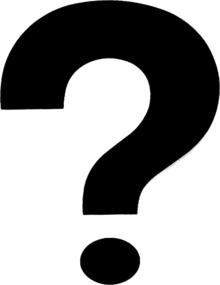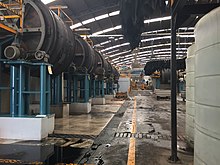User:Norbzzzz/sandbox/LeatherMaster
| This is not a Wikipedia article: It is an individual user's work-in-progress page, and may be incomplete and/or unreliable. For guidance on developing this draft, see Wikipedia:So you made a userspace draft. Find sources: Google (books · news · scholar · free images · WP refs) · FENS · JSTOR · TWL |

Leather is defined by the ISO as "a material of animal origin with its original fibrous structure more or less intact, tanned to be imputrescible, where the hair or wool may or may not have been removed, whether or not the hide or skin has been split into layers either before or after tanning and where any surface coating or surface layer, however applied, is not thicker than 0.15 mm."[1]
<RG: need to include sustainable/bi-product in intro 06.08.21>
<to be expanded once article completed>
International Trade[edit]
The worldwide leather industry produces approximately 23-24 billion square feet of leather per year.[2] The value of international trade of raw hides and skins (other than furskin) and leather is nearly $20 billion, and it is the 75th most traded commodity in the world.[3] When combined with leather products (such as footwear, garments and accessories), international trade exceeds $80 billion annually[4] (excluding leather and fashion furs derived from wild and exotic animals, which are banned from international trade by CITES).[4]
| Top 5 Raw Hides and Skins and Leather Importing and Exporting Countries
(Other than furskins) | ||||
|---|---|---|---|---|
| Rank | Export | Import | ||
| Country | 2019 | Country | 2019 | |
| 1 | $3.83B | $2.93B | ||
| 2 | $1.9B | $2.37B | ||
| 3 | $1.2B | $1.6B | ||
| 4 | $790M | $1B | ||
| 5 | $771M | $767M | ||
| Source: Observatory of Economic Complexity[3] | ||||
Top Producers of Leather[edit]
The developing countries produce over 60% of the world’s leather, and their share in global production is continuously growing.[5]
| Top 10 Leather Producing Countries in 2014 | |||||
|---|---|---|---|---|---|
| Cattle (bovine) Hides | Sheep and Goat Skins | ||||
| Rank | Country | Mln sqft | Rank | Country | Mln sqft |
| 1 | 2 517.4 | 1 | 1 317.1 | ||
| 2 | 2 040.4 | 2 | 686.9 | ||
| 3 | 1 363.1 | 3 | 415.6 | ||
| 4 | 1 013.8 | 4 | 308.6 | ||
| 5 | 1 003.7 | 5 | 225.0 | ||
| 6 | 703.1 | 6 | 193.1 | ||
| 7 | 691.1 | 7 | 127.9 | ||
| 8 | 595.7 | 8 | 126.6 | ||
| 9 | 579.2 | 9 | 122.4 | ||
| 10 | 272.1 | 10 | 114.2 | ||
| Source: UN Food & Agriculture Organization[5] | |||||
Market Size and Employment[edit]
The global leather goods market including leather footwear is valued at $407.92 billion and according to CAGR analysis will grow by 5.9% reaching $624.08 billion in 2028.[6] In developing countries, leather and leather goods production is a labour intensive industry that provides employment to the lower social class often in rural areas.[7] Only in India, 4.42 million people find employment in leather industries with 30% being women.[7] In developed countries due to processes automatisation and optimisation less workforce is required. In the EU, where around 12% of world leather is produced,[5] the leather industries generate a turnover of €48 billion and employ 435 000 people in 36 000 enterprises.[8]
Leather Manufacturing[edit]
Raw Materials [Rachel][edit]
Today, 99% of leather is produced from 4 types of livestock; bovine (69%), sheep (13%), goat (11%) and pig (6%). The remaining 1% is sourced from other animals such as exotics and fish.[9]
- Bovine (69%): <Insert brief description> The value of premium US steer hides, the most valuable leather raw material, represent approximately 2.2% of the total market value of the animal. <REF> In the US, nearly 14.5% of all cattle hides produced go to landfill, due to low demand<WEAK REF>. Globally, it is estimated that X% of hides end up landfilled or incinerated (ref).
- Sheep (13%): <Insert brief description>
- Goat (11%): <Insert brief description>
- Pig (6%): <Insert brief description>
- Other animals (1%): Equine and kangaroo hides are used to make particularly durable leathers due to their natural strength. <REF> In contrast, deer skin is used for soft leather. <REF> Reptile (such as alligator, crocodile and snake) and stingray skins are noted for their distinct patterns that reflect the scales of their species, these are often highlighted during the finishing process. <REF> Similarly, Ostrich skin has a characteristic "goosebump" look because of the large follicles where the feathers grew. <REF> Fish leather, given its thickness, is typically much stronger due to its criss-crossed fibers. <REF>

Production Processes [Norbert][edit]
Role of Enzymes [Rachel][edit]
Tanning Methods[edit]
Leather Classifications[edit]
History [Hannah][edit]
Prehistoric & Ancient Egyptian Times[edit]
The process of leather making has been practiced for more than 7,000 years.[10] In the prehistoric period, Homo sapiens would use animal hides for protection in cold climates to provide warmth. [11] However, the raw hides and skins would eventually putrefy or dry out making them rigid, stiff and inflexible, therefore different civilisations started to apply various techniques to cure and treat the hides and skins to strengthen and preserve them. <REF> The early tanning process involved drying fresh skins in the sun which were softened by animal fats and brains, further preserved by salting and smoking.[10]

Several artefacts have been discovered evidencing the process of leather making throughout history:
- Evidence of the oldest surviving leather shoe known as the Areni-1 shoe was discovered in 2010 in the Areni-1 cave in the Vayotz Dzor Province of Armenia. [12] Estimated at 5,500 years old (dating back to 3,500 BCE), archeologists believe the shoe’s preserved state was due to the stable, cool and dry conditions within the cave as well as the floor of the cave being covered by a thick layer of sheep dung which acted as a preservative seal. [12]
- The tanned leather garment wore by Ötzi, the iceman, is estimated to be 5,300 years old[13] and is displayed in the South Tyrol Museum of Archaeology in Bolzano, South Tyrol, Italy.
- The oldest leather manuscript dates back to 2,300 BC - 2,000 BC during the Ancient Egyptian period. [14]
- The grave of Tutankhamun (buried 1500 BC) contained sandals made of wood and overlaid with a marquetry veneer of bark, green leather and gold foil on a stucco base. [15]

Medieval Period[edit]
Tanning techniques and the applications of leather continued to develop during Ancient History, into the Middle Ages. By Medieval times, leather was already a mass-produced material used to make footwear, garments, gloves, bags and accessories, as well as being used in bookbinding, upholstery and saddlery <REF>. Vegetable tanning techniques were developed by the Moors, an indigenous culture that arrived in mainland Europe in the 8th century <REF>. Clusters of leather producers shortly began to appear in Italy (Tuscany and Florence), Spain (Córdoba), Morocco (Fez), Germany (Nuremberg), Turkey (Anatolia) and the UK (Northampton). <REF> Due to the increased prominence of tanning in Europe, the Tanner's Guild was formed in the 11th century to aid and protect the trade and is believed to be one of the oldest guilds in Europe. [16]
Modern Era[edit]
The Industrial Revolution led to substantial changes in the leather making process. The introduction of machinery, which itself used leather for drive belts, reduced the lead time for leather production. <REF> By the mid-19th century, power-driven machines performed operations such as splitting, fleshing, and dehairing. [10] This resulted in almost 16% of the workforce in America being employed in leather-related trades in the 1850s. <REF>

In 1858, Friedrich Ludwig Knapp patented and introduced chromium (chrome) tanning, a faster and cheaper method of tanning that over time, has reduced the popularity of the traditional process of vegetable tanning. <REF> Currently chrome tanning accounts for approximately 85% of the world's leather. <REF>
Leather dominated the markets and was one of the most traded materials until the 1960s. <REF> However, the technological advancements during WWI and WWII led to new materials being developed such as plastics and rubbers, which led to a decline in demand for genuine leather. <REF>
The globalisation process provoked the shift of leather production to developing countries, where producers benefit from low wages, reduced socio-environmental regulations and cheaper raw materials. <REF> These changes have resulted in due diligence and environmental issues. <MORE INFO/REF>
Leather Usage[edit]
Modern Culture[edit]
Religious Sensitivities[edit]
Sustainability[edit]
Social Impact [Norbert][edit]
Environmental Impact [ Diarmuid][edit]
Carbon Footprint[edit]
Water Footprint[edit]
Disposal[edit]
Chemical Management[edit]
Auditing and Certifications[edit]
<to include initiatives>
Organizations[edit]
Aftercare of Leather Goods [not sure where this should go?][edit]
Alternatives[edit]
References[edit]
- ^ "ISO 15115:2019(EN)".
{{cite web}}: CS1 maint: url-status (link) - ^ "Perspective on leather - Its place in the world". International Council of Tanners.
{{cite web}}: CS1 maint: url-status (link) - ^ a b "Raw hides and skins (other than furskins) and leather". The Observatory of Economic Complexity.
{{cite web}}: CS1 maint: url-status (link) - ^ a b "Leather". International Trade Centre.
{{cite web}}: CS1 maint: url-status (link) - ^ a b c "World statistical compendium for raw hides and skins, leather and leather footwear 1999-2015" (PDF). FAO. Rome: Food and Agriculture Organization of the United Nations. 2016. pp. 62–67.
{{cite web}}: CS1 maint: url-status (link) - ^ "Leather Goods Market Size, Share & Trends Analysis Report By Product (Footwear, Home Decor, Apparel), By Type (Genuine, Synthetic), By Region (North America, Asia Pacific), And Segment Forecasts, 2021 - 2028". Grand View Research.
{{cite web}}: CS1 maint: url-status (link) - ^ a b "Indian Leather Industry - Overview, Export Performance & Prospects". Council for Leather Export, India.
{{cite web}}: CS1 maint: url-status (link) - ^ "The leather industry in the EU". European Commission.
{{cite web}}: CS1 maint: url-status (link) - ^ "Leather UK Trade Association".
{{cite web}}: CS1 maint: url-status (link) - ^ a b c "leather | History & Facts". Encyclopedia Britannica. Retrieved 3 August 2021.
- ^ "When did humans first start wearing clothes?". BBC Science Focus Magazine. Retrieved 6 August 2021.
- ^ a b "'Oldest leather shoe' discovered". BBC News. 10 June 2010. Retrieved 3 August 2021.
- ^ Püntener, Alois, G; Moss, Serge (2010). "Ötzi, the Iceman and his Leather Clothes". CHIMIA. 64 (5). Swiss Chemical Society: 315–320. doi:10.2533/chimia.2010.315. PMID 21138077.
{{cite journal}}: CS1 maint: multiple names: authors list (link) - ^ "Ancient manuscript pieced together after Cairo Museum find". the Guardian. 17 September 2015. Retrieved 3 August 2021.
- ^ "Egypt: The Birthplace of Flip Flops? – The Sheridan Libraries & University Museums Blog". Retrieved 3 August 2021.
- ^ Kwasny, Melissa (2019). Putting on the Dog: the Animal Origins of What We Wear. Trinity University Press.
Further reading[edit]
- Beeby, K.J. The Wonderful Story of Leather (PDF). UK: Harmatan.
- Lefroy, George Alfred (1884). . Delhi: Cambridge Mission to Delhi.
- Leathers for Bookbinding and Upholstery (PDF). UK: Harmatan. 2002.
- Leather for Libraries (PDF). UK: Harmatan.
- Parsons, F. G. (1911). . Encyclopædia Britannica. Vol. 16 (11th ed.). pp. 330–345. (includes several diagrams)

